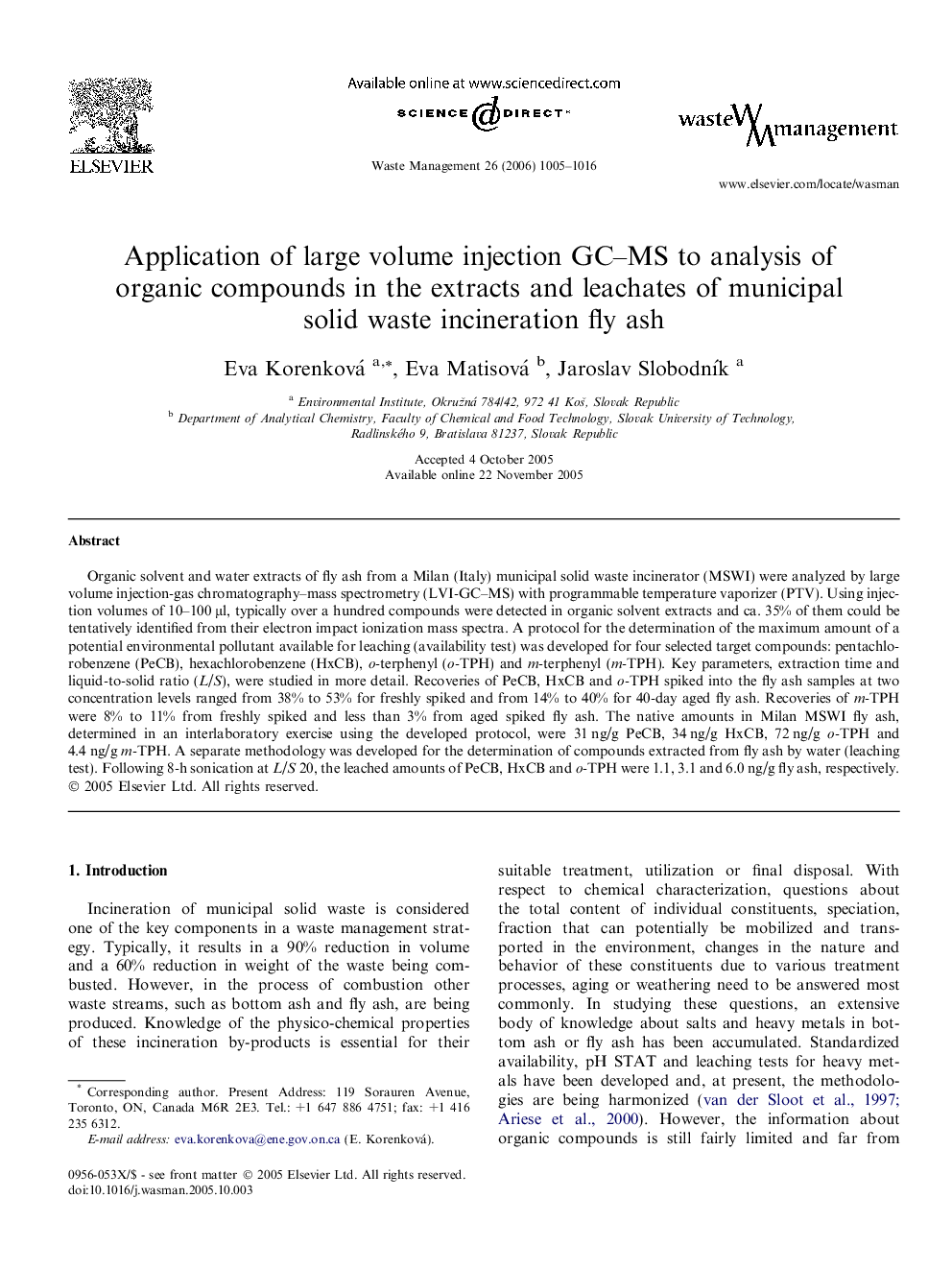| Article ID | Journal | Published Year | Pages | File Type |
|---|---|---|---|---|
| 4474248 | Waste Management | 2006 | 12 Pages |
Organic solvent and water extracts of fly ash from a Milan (Italy) municipal solid waste incinerator (MSWI) were analyzed by large volume injection-gas chromatography–mass spectrometry (LVI-GC–MS) with programmable temperature vaporizer (PTV). Using injection volumes of 10–100 μl, typically over a hundred compounds were detected in organic solvent extracts and ca. 35% of them could be tentatively identified from their electron impact ionization mass spectra. A protocol for the determination of the maximum amount of a potential environmental pollutant available for leaching (availability test) was developed for four selected target compounds: pentachlorobenzene (PeCB), hexachlorobenzene (HxCB), o-terphenyl (o-TPH) and m-terphenyl (m-TPH). Key parameters, extraction time and liquid-to-solid ratio (L/S), were studied in more detail. Recoveries of PeCB, HxCB and o-TPH spiked into the fly ash samples at two concentration levels ranged from 38% to 53% for freshly spiked and from 14% to 40% for 40-day aged fly ash. Recoveries of m-TPH were 8% to 11% from freshly spiked and less than 3% from aged spiked fly ash. The native amounts in Milan MSWI fly ash, determined in an interlaboratory exercise using the developed protocol, were 31 ng/g PeCB, 34 ng/g HxCB, 72 ng/g o-TPH and 4.4 ng/g m-TPH. A separate methodology was developed for the determination of compounds extracted from fly ash by water (leaching test). Following 8-h sonication at L/S 20, the leached amounts of PeCB, HxCB and o-TPH were 1.1, 3.1 and 6.0 ng/g fly ash, respectively.
